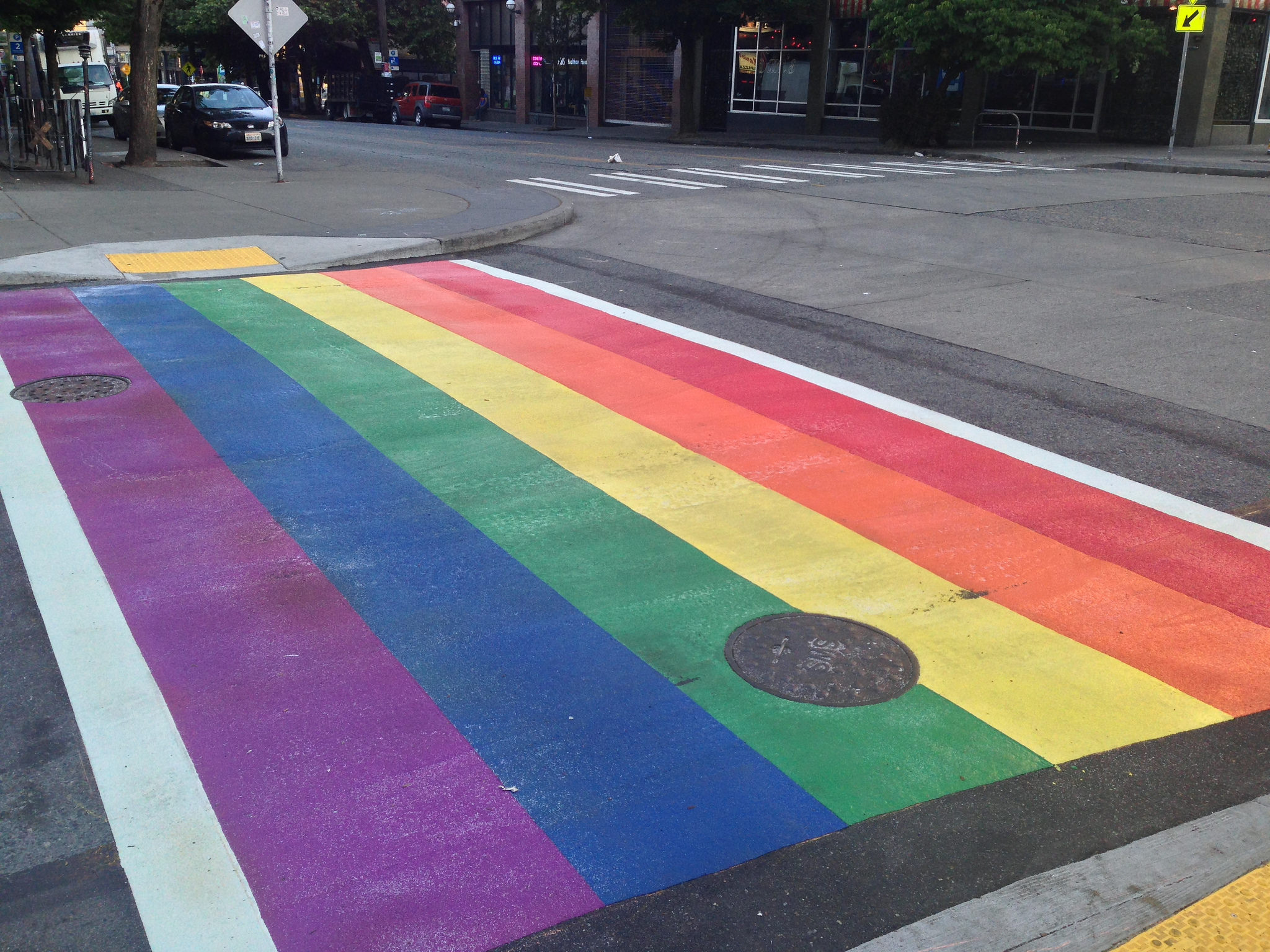Earlier this summer, Seattle introduced rainbow crosswalks throughout Capitol Hill in advance of Pride Week. Not long after, African-American community members in the Central District spray painted a series of crossings in Pan-African flag colors; those were made permanent by the city. Now the Seattle Department of Transportation (SDOT) and the Department of Neighborhoods (DON) are partnering up for a new community program where neighborhoods can choose when and where to paint their own. They’re calling the program “Community Crosswalks,” which enables neighborhoods to fund and design crosswalks that add artistic and cultural vibrancy at neighborhood intersections.
In statement yesterday on the new program, Mayor Ed Murray said:
This is about celebrating and enhancing community identities. The iconic rainbow crosswalks on Capitol Hill started a broader conversation on how we can incorporate neighborhood character in the built environment across Seattle. I’m excited to see more history, culture, and community on display for residents and visitors to enjoy.
Neighborhood groups can apply for painted crosswalks by submitting their plans and designs to SDOT for review, approval, and installation. To aide neighborhood groups in this effort and to ensure safety, SDOT has put out specific guidelines for Community Crosswalks. These primarily focus on three areas: location, pavement condition, and design. Here’s a summary of the guidelines:
- Community Crosswalks are only allowed at locations where a marked crosswalk exists and when motorists are required to stop due to signage or a traffic signal. SDOT encourages these to be located at intersections with low traffic volumes and small crossing widths.
- Pavement quality must be in good condition, which eliminates the need of additional road work and helps with the bonding of colored paint material.
- Crosswalks must include two reflective white horizontal markings to enclose the edges of the crosswalk. The colored markings themselves may only consist of horizontal and vertical stripes so that road users know that the crosswalks are real. Precise color arrangements are up to applicants, but they must gain approval from SDOT and be able to be supplied from the vendor. And finally, crosswalk designs cannot include text, logos, or symbols and shapes (e.g. octagons and triangles) that could be confused with a traffic control device.
But painting crosswalks isn’t cheap. Rainbow crosswalks in Capitol Hill totalled $72,600 for 11 intersections — $56,000 more than their standard white stripe counterparts. SDOT says that crosswalks typically cost $25 per square, but that all depends upon how they’re designed and the level detail put into them. On top of that, they usually last between 3 and 5 years. Intersections with higher traffic volumes naturally reduces the life of road paint.
While neighborhood groups can fund the full cost of installation on their own, the DON is providing an option to defer some of the costs through the Neighborhood Matching Funding (NMF). The NMF is broken into three funding types. But given the cost of crosswalks, most projects will fall into the Small and Simple Projects Fund, which provides up to $25,000 in matching funds. Neighborhood groups must put together an application showing that a project will build a stronger and healthier community through community involvement and engagement. The fund awards matching funds dollar-for-dollar based upon community volunteerism, donated materials, in-kind professional services, and cash for the project.
Over the coming months, look forward to more colorful crosswalks appearing across the city.
Stephen is a professional urban planner in Puget Sound with a passion for sustainable, livable, and diverse cities. He is especially interested in how policies, regulations, and programs can promote positive outcomes for communities. With stints in great cities like Bellingham and Cork, Stephen currently lives in Seattle. He primarily covers land use and transportation issues and has been with The Urbanist since 2014.




